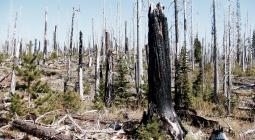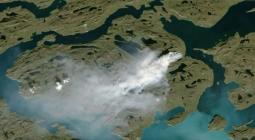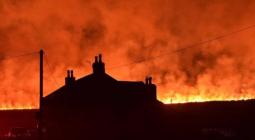10 Wildfires Ignite Around Los Angeles in Unseasonable Wind and Heat.
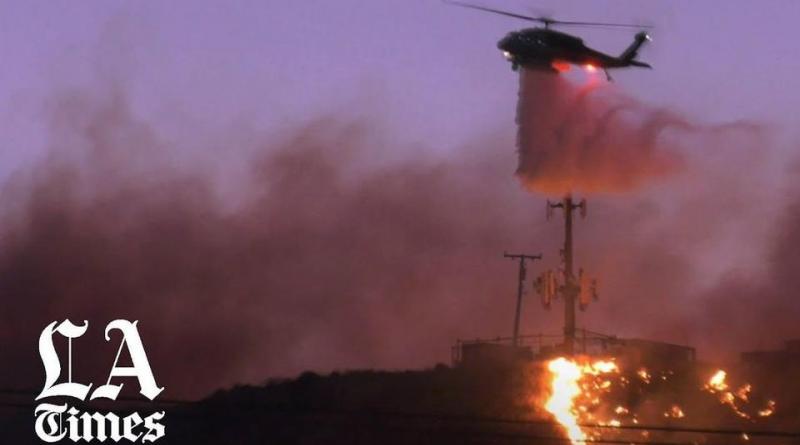
Unusually strong winds for June fanned the flames of 10 wildfires around Los Angeles County Monday, the Los Angeles County Fire Department said.
The largest of the blazes was the Equestrian Fire in Castaic, which was propelled by some of the strongest winds in the area, LAist reported. Wind speeds in the region reached 65 miles per hour.
"It's rare to have the Santa Ana winds in June, which is why we should be ready for wildfires at all times of the year," NBC4 forecaster Belen De Leon said.
The fire ignited early Monday near the Jack Bones Equestrian Center off the 5 freeway, the Los Angeles Times reported. Firefighters used water-dropping helicopters to help fight the flames, NBC4 reported. As of 3 p.m. Monday it had spread to 86 acres and was 70 percent contained, a spokesperson for the Los Angeles County Fire Department told the Los Angeles Times.
"There are still crews there, but they're just mopping up the hot spots," L.A. County Fire Department Inspector Henry Narvaez told the paper.
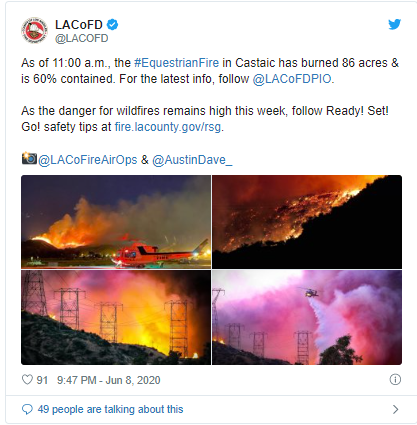
Other fires that ignited in Elysian Park, Eagle Rock, El Sereno, Lake View Terrace, the Sepulveda Basin and other areas were mostly contained to a few acres, LAist reported.
However, the fires were notable for the unseasonable weather that encouraged them.
"Typically we're talking about June Gloom. Cool conditions along the coast," National Weather Service (NWS) meteorologist Eric Boldt told LAist. "This is an unusual weather system. We usually don't see this strong of winds and the Santa Anas like we're seeing today."
The Santa Ana winds typically arrive in the fall, during peak fire season.
In addition to the winds, temperatures are above average this week, with highs more than 20 degrees above normal projected for Tuesday, according to the Los Angeles Times. High temperature records were broken Monday at the Los Angeles, Long Beach and Camarillo airports, NWS reported. A red flag fire warning was issued for the area through Monday night.
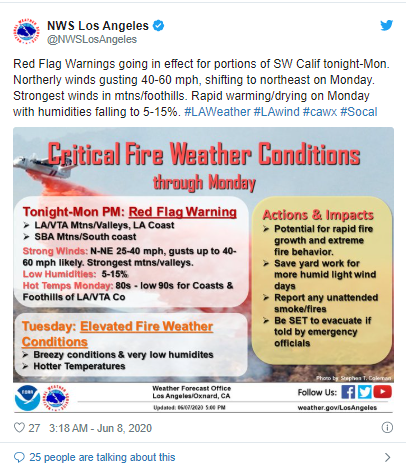
"The weather conditions combined with the fuels — the grasses and vegetation — are ripe for more extreme fire spread and behavior if one were to start," NWS Oxnard meteorologist Mike Wofford told the Los Angeles Times.
The climate crisis is making California's wildfires worse by encouraging hot, dry weather, but it could actually decrease the frequency of Santa Ana winds, especially in the fall and spring, a 2019 study found. This would not necessarily reduce fire risk so much as push the season later, as rains are also delayed by climate changes.
"The window for wildfires is expanding toward winter," study coauthor Dr. Janin Guzman-Morales, a postdoctoral researcher at the Scripps Institution of Oceanography at the University of California, San Diego, told The New York Times.
9 June 2020
EcoWatch

